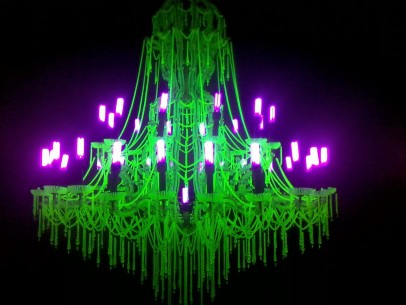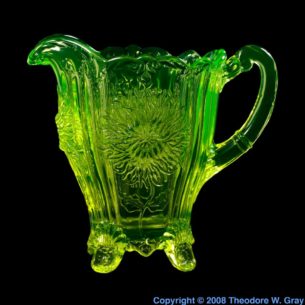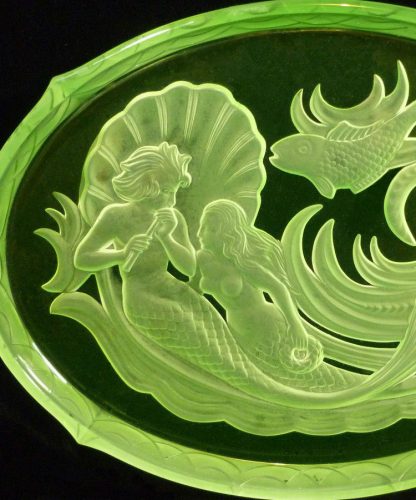 When I first heard the term “Uranium Glass,” my initial thought was, perhaps rather predictably, “They didn’t really use uranium in it, did they?”
When I first heard the term “Uranium Glass,” my initial thought was, perhaps rather predictably, “They didn’t really use uranium in it, did they?”
Yes, actually, they did — and it really does glow bright green in the dark, with the application of ultraviolet light (which, incidentally, is usually the best litmus test to identify whether the yellow-green glass you have obtained is authentic uranium glass).
That being said, while the glass will set off a Geiger counter in some cases, it is not sufficiently radioactive to pose a human health hazard; modern uranium glass (that is, that produced in the 20th century, particularly post-1959) usually contains only two per cent uranium. 19th century pieces may contain up to twenty-five per cent uranium, but are still not thought to pose any real risk, likely due to the fact that uranium glass derives its colour from uranium dioxide, which is a fairly stable form of uranium that does not emit a great deal of radiation (it is not the more famous sort used in bombs or power plants). Keep in mind, too, that glass as a medium provides a solid barrier which prevents uranium from actively leeching. Your microwave or television set likely emits more background radiation than this glass, making it a harmless novelty of truly appreciable beauty.
 Also known as “Vaseline Glass” owing to its greasy, milky appearance, which is akin to the surface of petroleum jelly, the large-scale production of uranium glass originated in the 1830s and continued going strong until the Second World War, reaching its peak in popularity during the Art Deco Period of the 1920s. Glass from the earliest period of production is arguably the most beautiful; being made of heavy coloured crystal with intricate facet cutting and polishing, and sometimes decorated with enamel or engraving.
Also known as “Vaseline Glass” owing to its greasy, milky appearance, which is akin to the surface of petroleum jelly, the large-scale production of uranium glass originated in the 1830s and continued going strong until the Second World War, reaching its peak in popularity during the Art Deco Period of the 1920s. Glass from the earliest period of production is arguably the most beautiful; being made of heavy coloured crystal with intricate facet cutting and polishing, and sometimes decorated with enamel or engraving.
Prior to the war, natural uranium was used, but after production resumed in 1959, a switch was made to depleted uranium. To this day, a few companies carry on the tradition, such as Boyd Crystal Art Glass, Moser, Summit Glass, and Fenton Glass, but only decorative glass is being made, no tableware. However, it has been estimated that there were at least 4,160,000 pieces of decorative uranium glass produced in the US between 1958 and 1978 and 15,000 drinking glasses from 1968 to 1972, so if you seek a set of authentic dinnerware, the secondary market can likely provide.
Uranium glass makes a truly stunning addition to any interior owing to the fact that it actually glows softly in sunlight, as the sun gives off UV rays. This makes it a delicate touch to the overall ambiance of any room, adding a subtle hint of the absinthe decadence that touched the Art Deco and Art Nouveau eras.
Guest article by
JL Field

